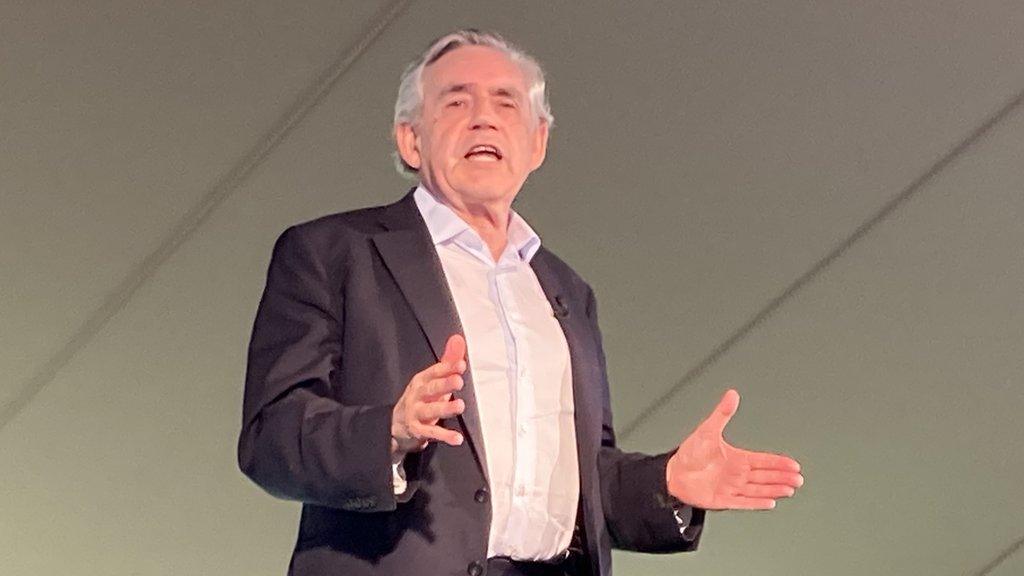Pussy Riot, U2 and Sir Cliff: The Greenbelt story
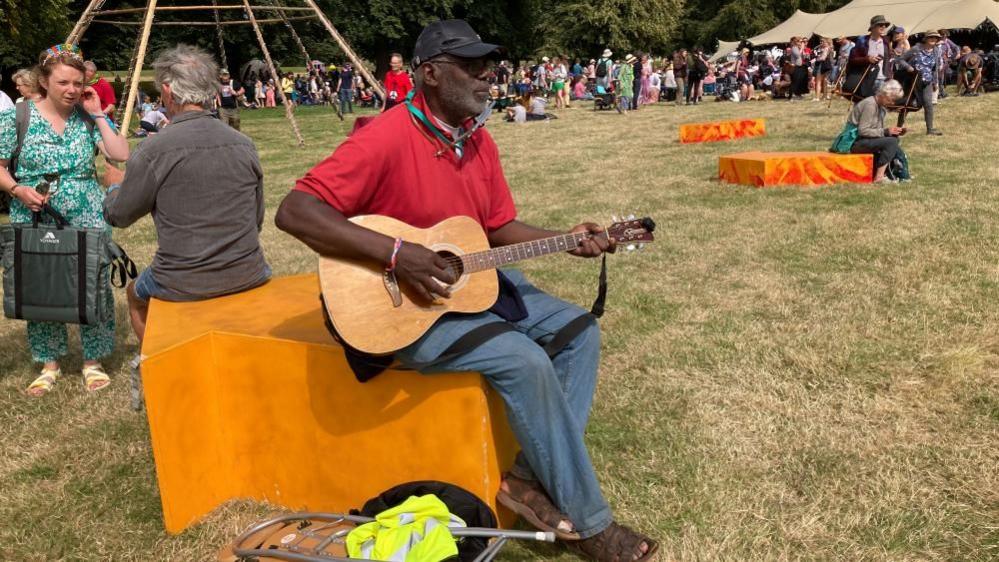
Greenbelt has welcomed everything from impromptu busking to chart-topping bands over the years
- Published
Thousands of people will be descending on a stately home this weekend for a festival that has been staged more times than Glastonbury.
Greenbelt, the arts, faith and justice festival, began in 1974 and is taking place this year at Boughton House near Kettering in Northamptonshire.
Among the guests will be former Labour leader Jeremy Corbyn and Silent Witness actress, Liz Carr, who is also a disability rights campaigner.
So how did the story start and what have the last 50 years been like for Greenbelt?
A chance encounter
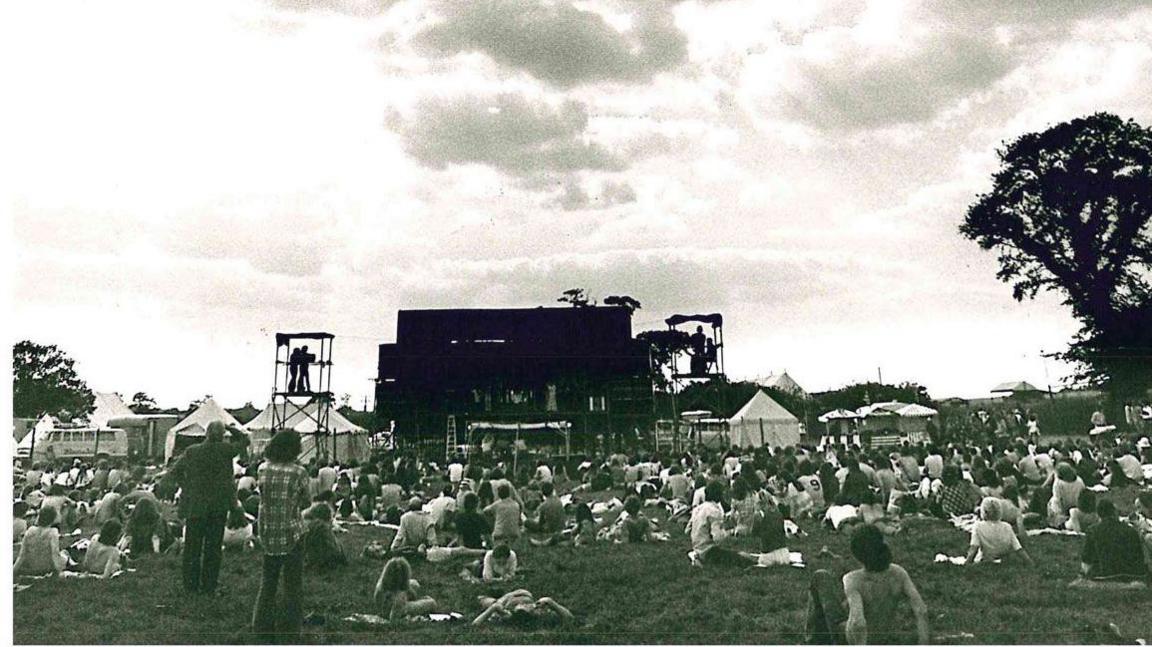
The first Greenbelt took place at Prospect Farm in Suffolk in 1974
The event came together after James Holloway, a theologian and bricklayer, picked up a Christian musician called Steve Shaw, who was hitchhiking.
Some time later, Shaw introduced Holloway to Jim Polassari, part of a travelling Christian community, who wanted to stage a so-called Jesus Festival.
Shaw said that he knew someone in Suffolk whose brother had a farm, and Polassari replied: "If you've got a farm, you've got a festival."
They got the go-ahead to use the farm and it staged the first Greenbelt in 1974, with the songwriter Garth Hewitt and the Daventry-born music journalist, Steve Turner, on the bill.
In the early days, some of the funding came from a trust that wanted to bring young people to Christianity.
The founders argued that it needed to have a wider appeal, focussing on arts and social justice as well as faith.
The funders eventually agreed, and the broad appeal is something the festival has aimed for ever since.
Which famous musicians performed at early Greenbelt festivals?
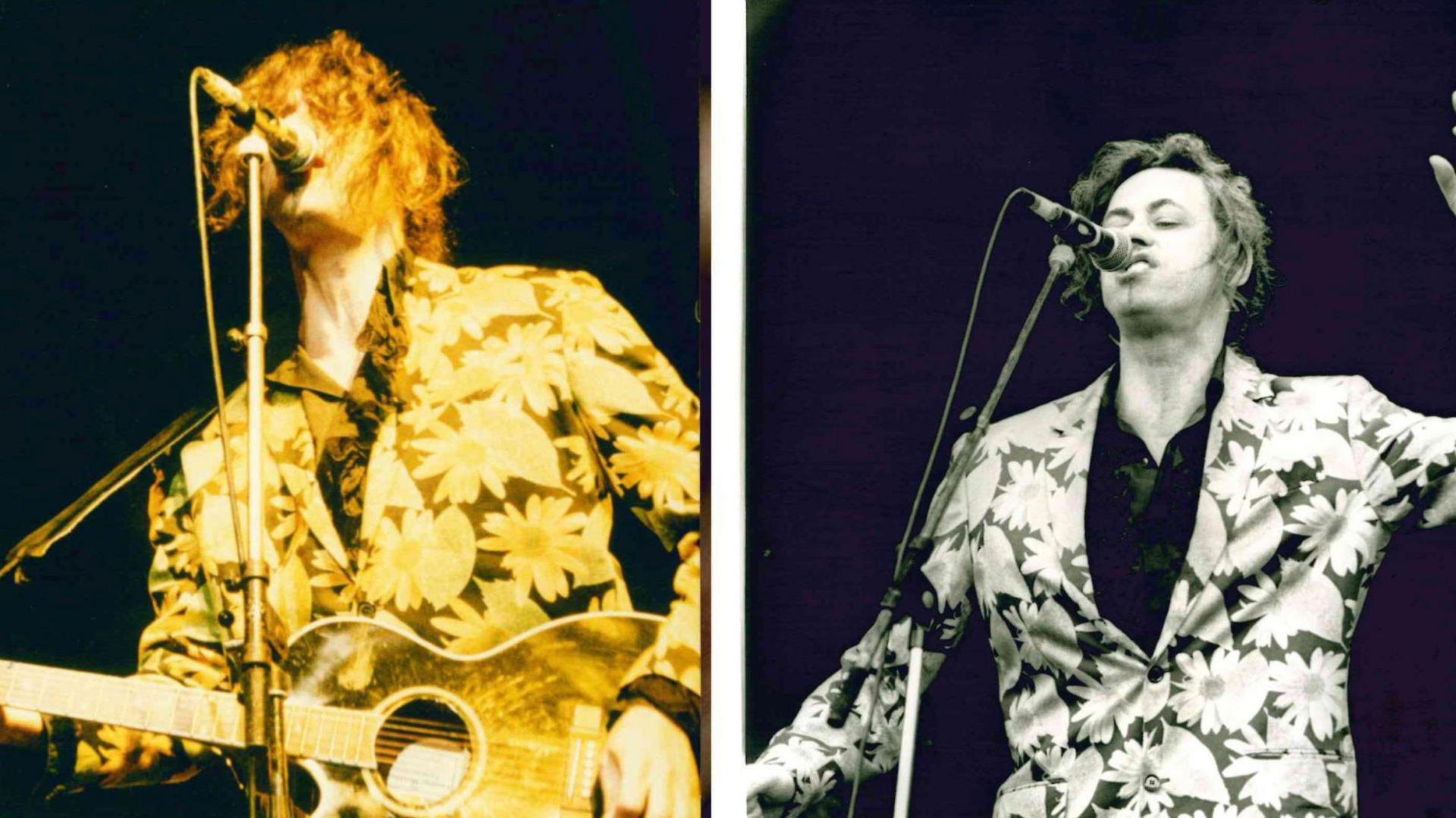
Bob Geldof took to the stage at Greenbelt in 1992
The festival was seen as adopting a position on the political spectrum that was to the left of most church congregations, supporting causes such as Palestine, social justice in Nicaragua and gay and lesbian rights.
It reached out to well-known entertainers who would be in tune with its philosophy.
The Christian musicians Sir Cliff Richard and Roy Castle appeared on the bill in 1979, when the festival was based at Odell Castle near Bedford.
Sir Cliff finally agreed to play at Greenbelt after several invitations were declined, and adhered to a condition that he played his secular hits as well as his worship music.
U2 featured in 1981, alongside Rick Parfitt of Status Quo, Phil Everly and Sir Cliff again.
Sir Cliff made a third appearance two years later, when Greenbelt graced the hallowed grass of Knebworth House, whose own eponymous festival had made its debut in the same year as Greenbelt.
When did the festival first visit Northamptonshire?
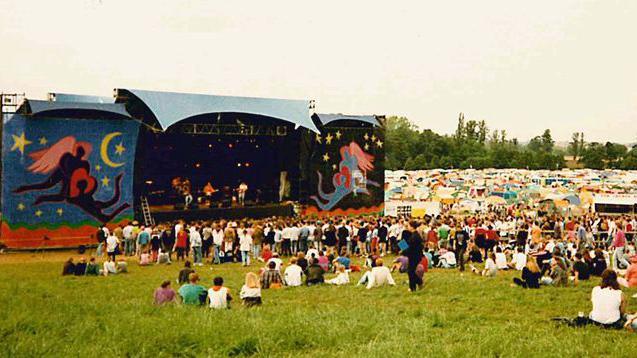
The festival was at Castle Ashby in Northamptonshire for nearly a decade
Knebworth House attracted huge audiences but also turned out to be quite expensive and Greenbelt was not universally popular with nearby residents.
In 1984, the Greenbelt caravan moved to Castle Ashby, the home of the Marquess of Northampton, where it stayed until 1991.
The main stage line-up was dominated by Christian musicians such as Amy Grant, Ladysmith Black Mambazo, and, yet again, Sir Cliff.
Artistes who were not known for their faith, such as Runrig and Steve Harley, and those known to be atheists, such as Bob Geldof and Labi Siffre, also made appearances.
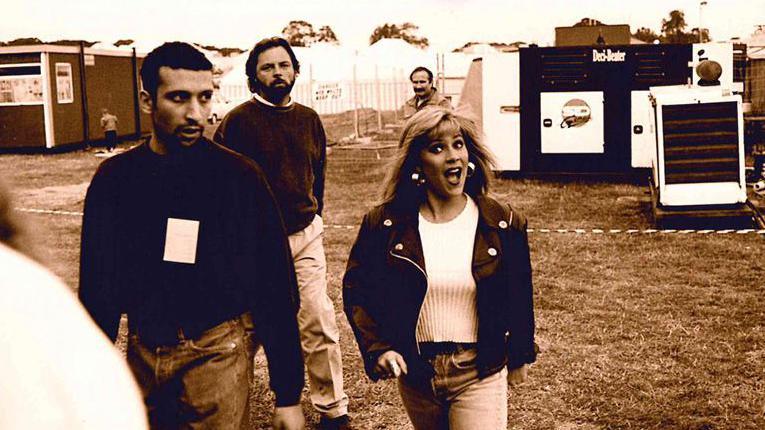
The model Samantha Fox was on the programme in 1994
Following the departure from Castle Ashby, the Greenbelt Board wanted to establish a permanent home down the road at Church Stowe in Northamptonshire, but they were met strong resistance from local people and shelved the plan.
Instead, this radical, left-leaning spectacle found its way to another stately home, Deene Park, the seat of the Brudenell family.
Big names such as Tom Robinson, The Proclaimers, Moby and, bizarrely, model Samantha Fox, performed among the avenues of trees and formal gardens of Deene Park.
Why did the festival move out of Northamptonshire?
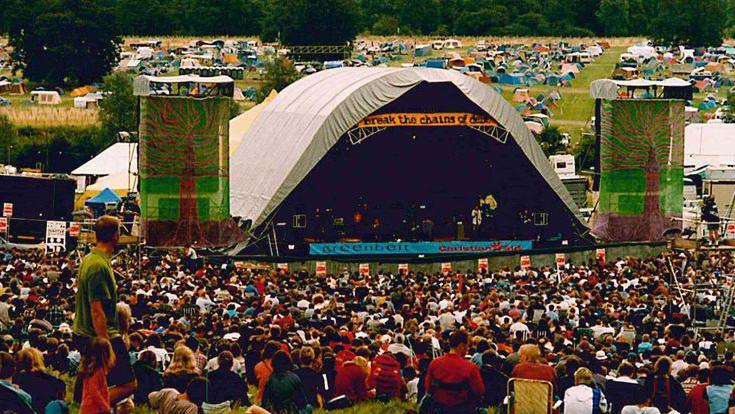
Greenbelt bade farewell to Deene Park in 1998
By the end of the 1990s, attendance and finances were becoming something of a headache for Greenbelt's audiences.
Church youth groups, which had often turned up in the festival campsite en masse, were declining, as church attendance across the board started to fall.
Churches that were attracting young people were generally more conservative and less in tune with the Greenbelt vibe.
The costs of turning Deene Park into a functioning village every year and then returning it to an immaculate estate were increasing, so the board looked for a venue which came with things like running water, electricity and proper toilets as standard.
They settled on Cheltenham Racecourse.
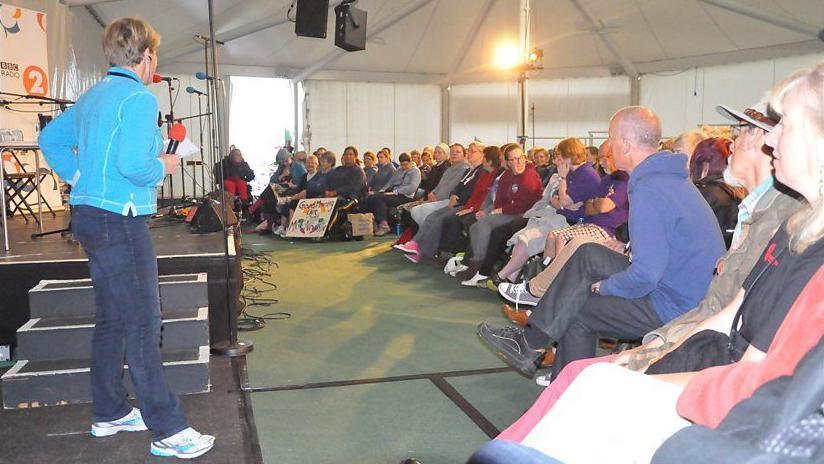
Claire Balding presented her BBC Radio 2 programme from the festival at Cheltenham Racecourse
From 1999, the historic national hunt course welcomed the likes of Joan Armatrading, Courtney Pine, Billy Bragg and The Proclaimers to the main stage.
The festival was also attracting some big names who took part in debates or talks.
Rowan Williams, who was Archbishop of Canterbury at the time, Peter Tatchell, Bruce Kent and Clare Short were on the programme.
But, in 2013, the racecourse management informed Greenbelt that they were closing for refurbishment and the festival could no longer happen there.
And, once more, Northamptonshire beckoned...
How is Greenbelt doing now?
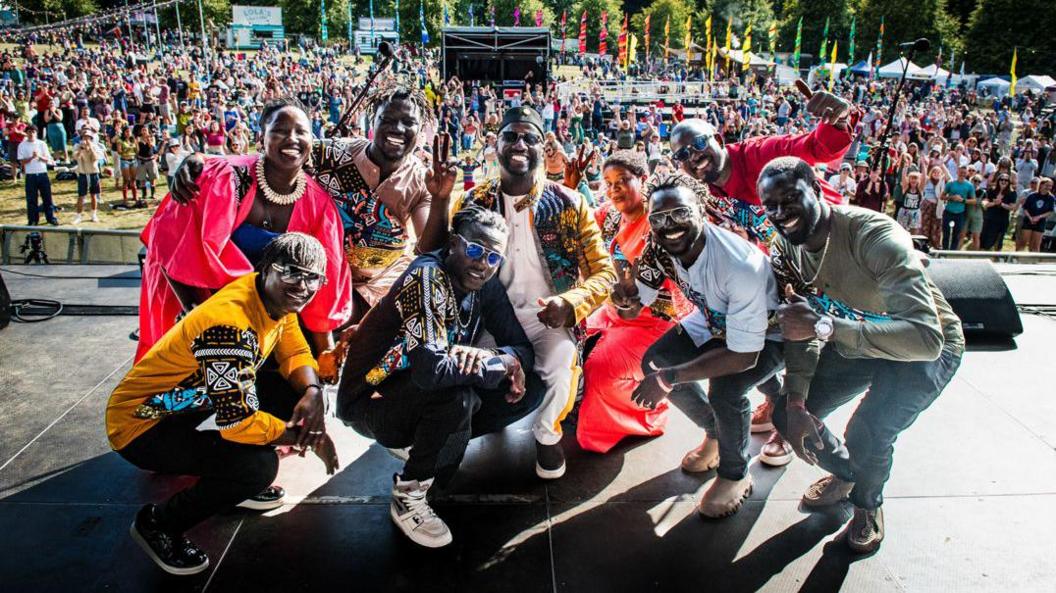
The Seckhou Keita Band performed in 2024
Greenbelt took a bit of a risk by returning to a stately home where the grounds had no running water, electricity or proper toilets.
The first year, 2014, was difficult, and Greenbelt lost a lot of money, but it focussed its priorities, raised money and gradually attracted more people through the gates.
The festival-goers came to love their new venue, telling the BBC they preferred the "back to nature" vibe of the place and the feeling of an event that created its own environment and then cleared it away afterwards.
Just as the Boughton House event built up a head of steam, Covid-19 hit, turning the 2020 Greenbelt into a digital-only programme and the 2021 edition into small-scale community gatherings at the campsite.
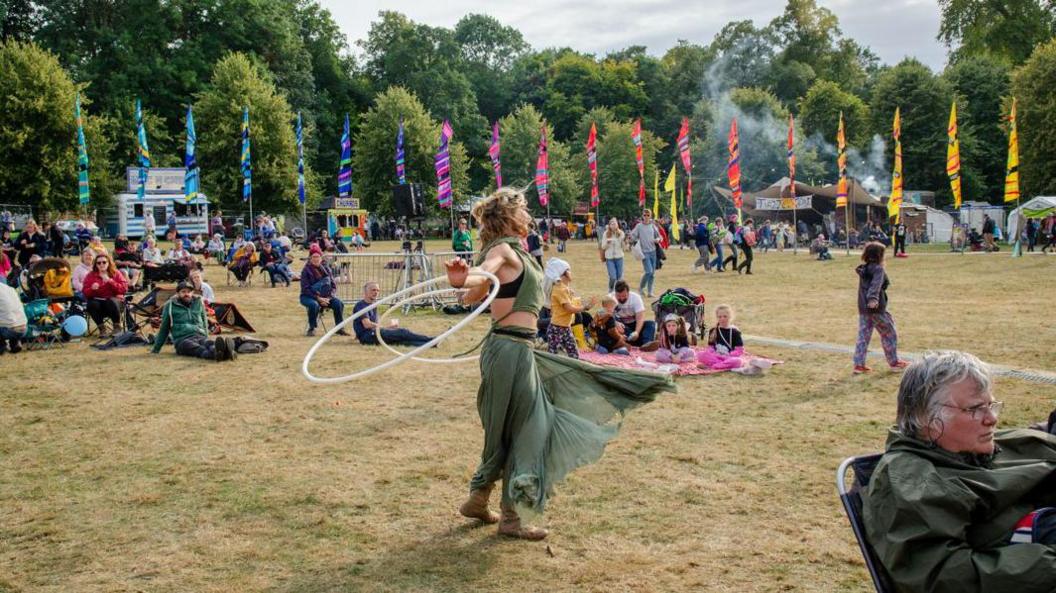
Away from the main stage, there are small-scale performances throughout the site - this is a scene from 2024
Since 2022, the full-strength festival has been attracting more than 10,000 people and more big names.
The feminist punk rock group Pussy Riot was on the bill in 2018. Former Prime Minister Gordon Brown and comedian Milton Jones have been recent guests.
A flexible ticketing system has been introduced, allowing those who cannot afford the full price to pay less and those who can afford it to pay more than face value.
With Corbyn, Carr, Lost Voice Guy and Adjoa Andoh lined up for 2025, the festival has made it into its 50s, weathering a great many storms and - most of the time - enjoying the sunshine.
Get in touch
Do you have a story suggestion for Northamptonshire?
Follow Northamptonshire news on BBC Sounds, Facebook, external, Instagram, external and X, external.
Related topics
- Published7 April
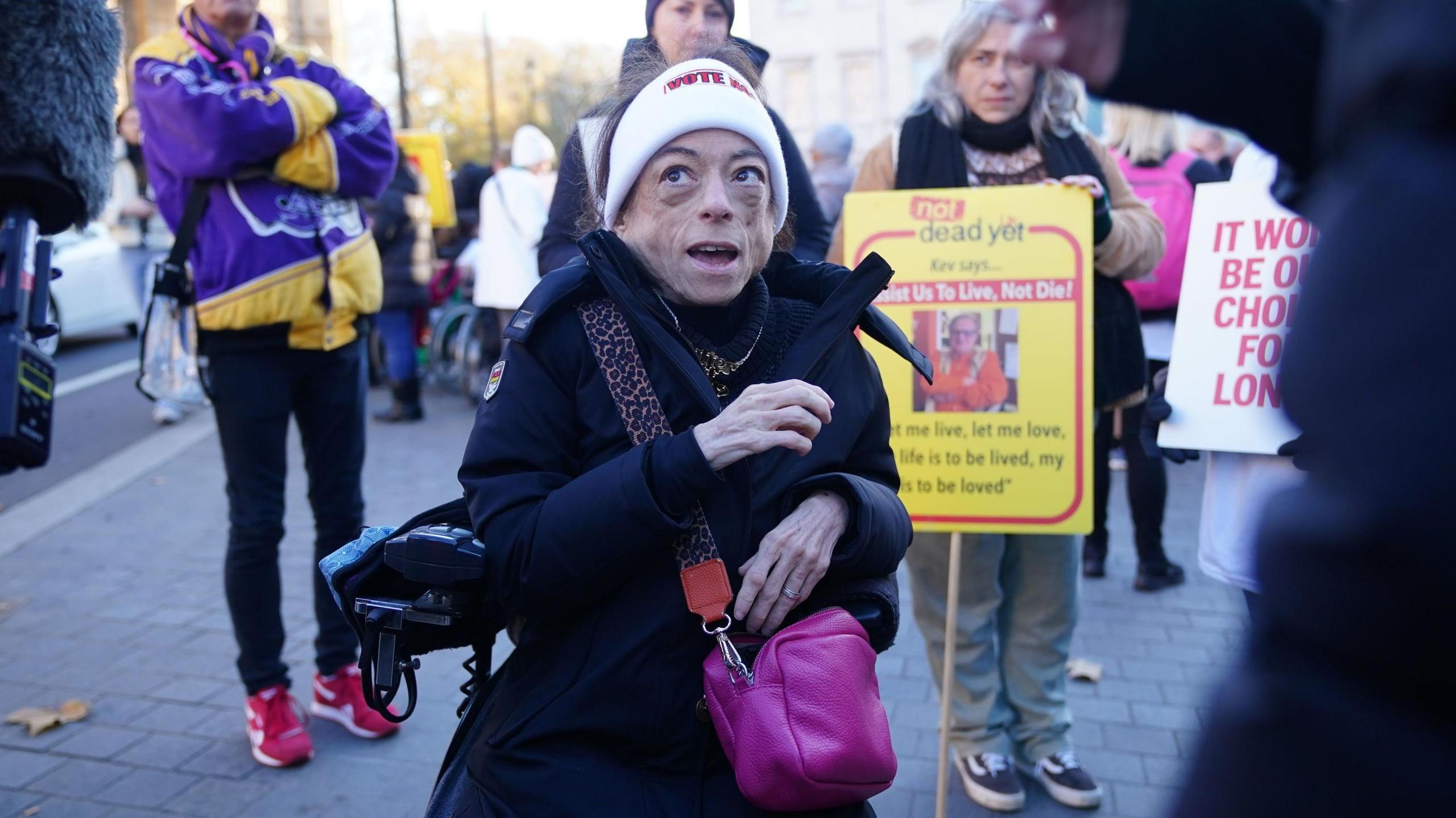
- Published22 August 2024
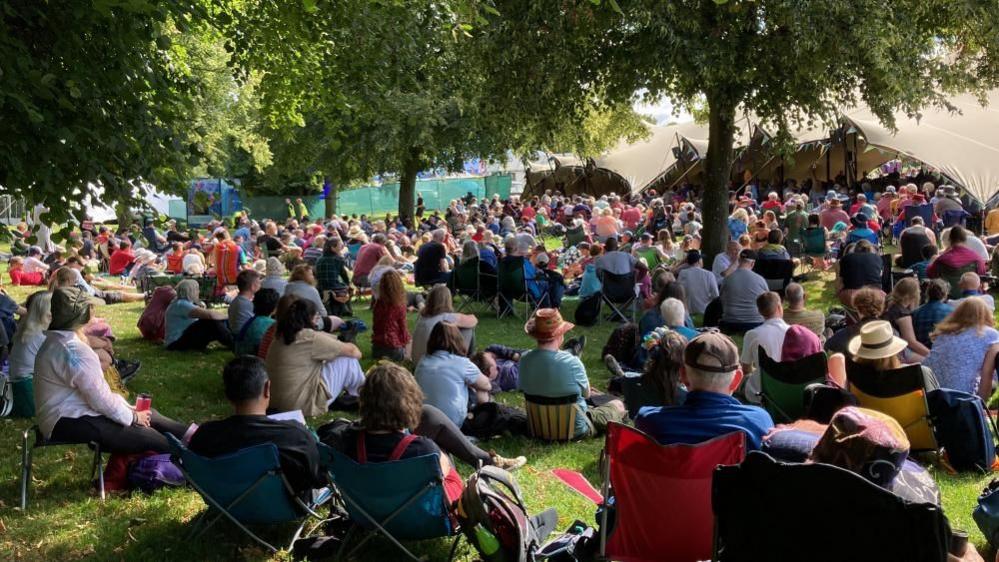
- Published29 August 2023
